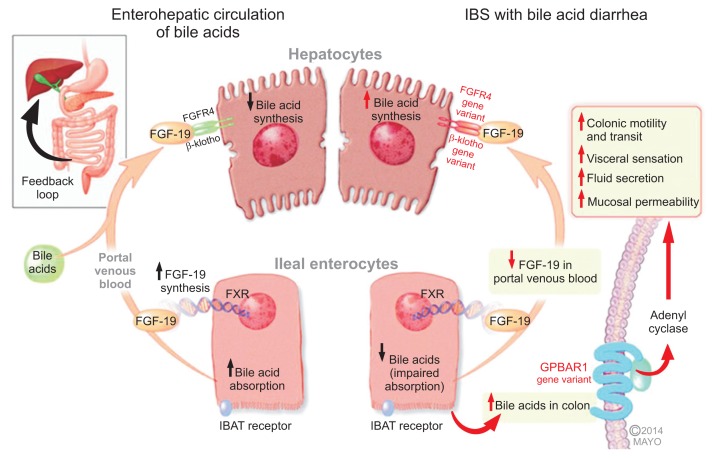Fig. 1.
Mechanisms of bile acid (BA)-related bowel dysfunction in irritable bowel syndrome with diarrhea (IBS-D) or idiopathic BA diarrhea (Adapted from Camilleri M. J Physiol 2014;592(Pt 14):2967–2980).7 Enterohepatic circulation of bile acids: Ileal enterocytes absorb bile acid through a receptor-mediated process (ileal bile acid transporter [IBAT]). Intracellular bile acids activate the farnesoid-γ receptor to increase fibroblast growth factor 19 (FGF-19) synthesis. FGF-19 in the portal circulation downregulates hepatocyte bile acid synthesis. Disorders of FGF-19 synthesis by ileal enterocytes or genetic variations of FGFR4 or β-klotho lead to excess bile acid concentration in the colon, resulting in activation of the G protein-coupled bile acid receptor 1 (GPBAR1, or TGR5) with enteroendocrine cell stimulation (e.g., release of 5-hydroxytryptamine) and stimulation of colonic motility with acceleration of colonic transit, activation of visceral sensation and fluid secretion (through increased intracellular cAMP, increased mucosal permeability or chloride ion secretion). Genetic variation in GPBAR1 (TGR5) is associated with increased colonic transit in IBS-D.

